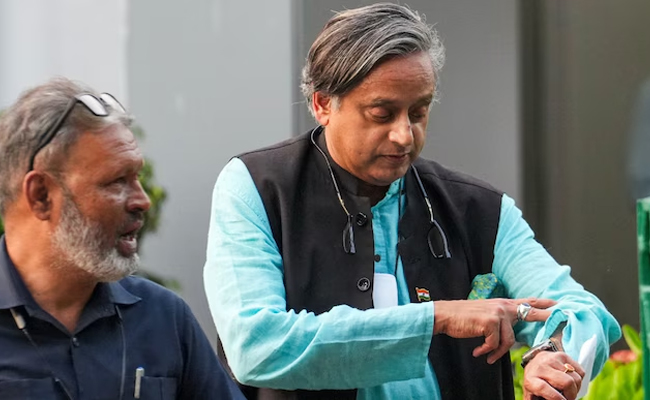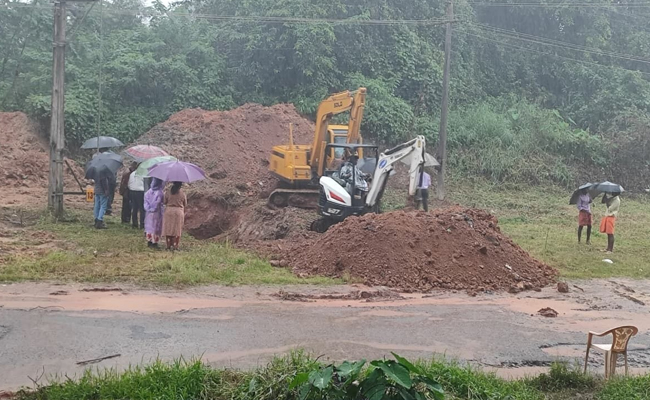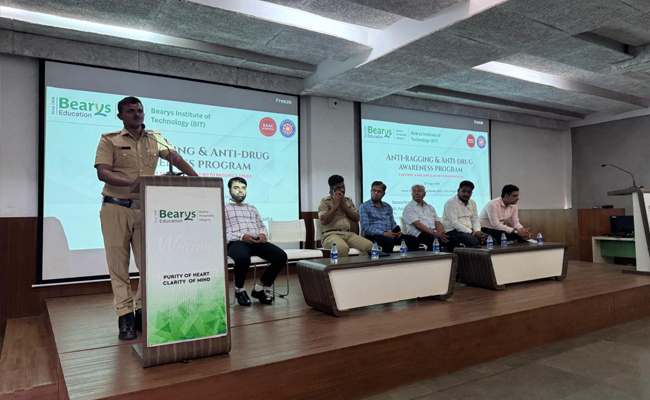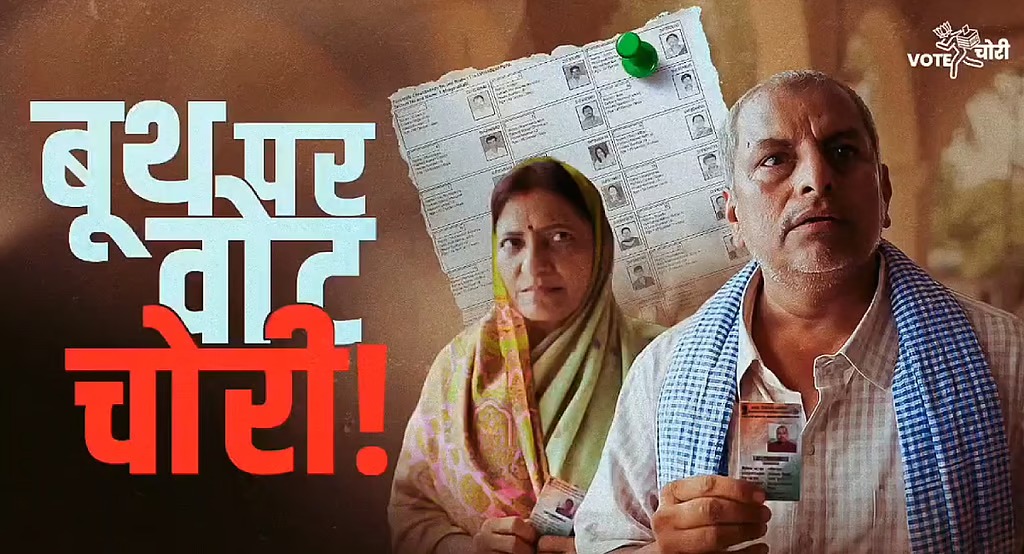Thiruvananthapuram (PTI): Senior Congress leader Shashi Tharoor has criticised the Emergency declared by Prime Minister Indira Gandhi in 1975, saying the people of the country responded clearly to the excesses of that period by voting her party out of power by a large margin.
In an article published on the measure, which lasted between 25 June 1975 and 21 March 1977, in the Malayalam daily 'Deepika' on Thursday, the Congress Working Committee member termed it "a dark chapter" in India's history and recalled Indira Gandhi's son Sanjay Gandhi's notorious acts, including forced sterilisation campaigns and the merciless demolition of slums in New Delhi.
Prime Minister Indira Gandhi was seen as having endorsed harsh actions, Tharoor said, criticising the country's first woman prime minister—whom the Nehru family and the Congress regard as the Iron Lady of India—on the matter.
When asked for his views on the article, Leader of Opposition and senior Congress leader V D Satheesan said only the national leadership of the party can comment on this.
Further commenting on the measures taken under Emergency, Tharoor said that efforts undertaken for discipline and order often turned into acts of cruelty that could not be justified.
"Sanjay Gandhi, the son of Indira Gandhi, led forced sterilisation campaigns, which became a notorious example of this. In poor rural areas, violence and coercion were used to meet arbitrary targets. In cities like New Delhi, slums were mercilessly demolished and cleared. Thousands of people were rendered homeless. Their welfare was not taken into consideration," the Thiruvananthapuram MP wrote.
Tharoor lamented that these actions were later portrayed with some dignity, despite being unfortunate excesses.
"Some may argue that the Emergency brought about a temporary order and offered brief relief from the disorder of democratic politics. However, these violations were the result of unchecked power turning into authoritarianism. Whatever order may have emerged during the Emergency, it came at the cost of the soul of our Republic," the Congress leader said.
He said the silencing of dissent, the curtailment of fundamental rights such as the freedom to assemble, write, and speak freely, and the blatant disregard for constitutional laws left an enduring scar on Indian politics.
Although the judiciary later tried to restore balance, the initial setback could not be forgotten, Tharoor said.
"The excesses of that period caused deep and lasting damage to countless individuals. Among the affected communities, it left behind fear and mistrust. Following the Emergency, in the first free election held in March 1977, the people responded clearly—voting Indira Gandhi and her party out of power by a large margin," the Congress MP said.
He said "democracy is not something to be taken lightly"; it is a "precious legacy that must be constantly nurtured and preserved."
"Let it serve as a lasting reminder to people everywhere," Tharoor said.
According to him, today's India is not the India of 1975.
"We are a more self-confident, more developed, and in many ways a stronger democracy. Yet, the lessons of the Emergency remain relevant in troubling ways," he said.
Tharoor warned that the "temptation to centralise power", silence dissent, and "bypass constitutional safeguards" may reappear in various forms.
"Often, such tendencies may be justified in the name of national interest or stability. In this sense, the Emergency stands as a strong warning. The guardians of democracy must always remain vigilant," he added in the article.
When asked for his reaction to Tharoor's article, senior Congress leader V D Satheesan said that Tharoor is a member of the party's Working Committee and that it is the national leadership that should comment on the article he has written.
"I do have an opinion about the article, but I will not express it," he told reporters here.
Senior Congress leader K Muraleedharan said a discussion on the "Emergency was not relevant at the moment."
Let the Truth be known. If you read VB and like VB, please be a VB Supporter and Help us deliver the Truth to one and all.
Bengaluru: A soil scientist, who has studied tropical lateritic soils, has released a note in anonymity, warning the Special Investigation Team (SIT) probing alleged mass burials in Dharmasthala (1994–2014) that improper excavation could permanently destroy critical forensic evidence.
The scientist cautioned that in the coastal, high-rainfall environment of Dharmasthala, bones from older graves are often not visually present due to the region’s acidic laterite soil, which accelerates decomposition. “In these conditions, the visual absence of bones does not mean there was no burial,” the expert stressed. “Chemical and microscopic soil analysis may be the only way to detect older graves.”
According to the soil scientist, Dharmasthala’s lateritic soil has a pH of 4.5–6, is porous and rich in iron and aluminium oxides, and is subject to over 3,500 mm of annual rainfall. These factors together cause rapid bone mineral dissolution and collagen breakdown. “In as little as 15–20 years, complete skeletons can be reduced to just teeth, enamel shards, or micro-residues,” the scientist said.
Drawing on comparisons with Rwanda, Cambodia, Sri Lanka, and Srebrenica, the scientist estimated that:
- Graves less than 15 years old have a reasonable chance of yielding skeletons.
- Graves 15–20 years old may yield only partial skeletons and teeth.
- Burials older than 20 years often retain only chemical signatures and microscopic fragments.
“In Dharmasthala’s soil, the probability of finding a full skeleton after two decades is near zero,” the expert said.
‘JCBs will destroy what’s left’
The soil scientist was particularly critical of the use of heavy machinery in the investigation. “Uncontrolled digging with JCBs can obliterate brittle bone fragments, erase burial stratigraphy, and mix burial soil with surrounding soil, diluting chemical signals,” he warned. “It’s equivalent to destroying the crime scene.”
The scientist emphasised that disturbed lateritic soil can quickly resemble undisturbed ground, making it almost impossible to detect graves later.
GPR as a map, not a microscope
The expert also noted that Ground Penetrating Radar (GPR) could play a limited role in the investigation. “GPR can help locate soil disturbances, but in wet, iron-rich lateritic soils, it cannot ‘see bones.’ For burials decades old, chemical analysis of soil is far more reliable,” he said.
Call for controlled forensic exhumation
The soil scientist urged the SIT to stop all mechanical digging and adopt a forensic protocol:
- Use GPR or other non-invasive methods to locate anomalies.
- Excavate in small, measured layers under forensic supervision.
- Collect soil samples for chemical and microscopic analysis.
- Sieve soil to recover micro bone fragments and teeth.
“Only a controlled, scientific approach will preserve what little evidence may remain in this environment,” the scientist said. “If these traces are destroyed, the truth about the alleged burials may never be proven.”
The SIT is investigating allegations of mass burials linked to the disappearance of individuals between 1994 and 2014 in Dharmasthala. No official response to the scientist’s concerns has been issued.





